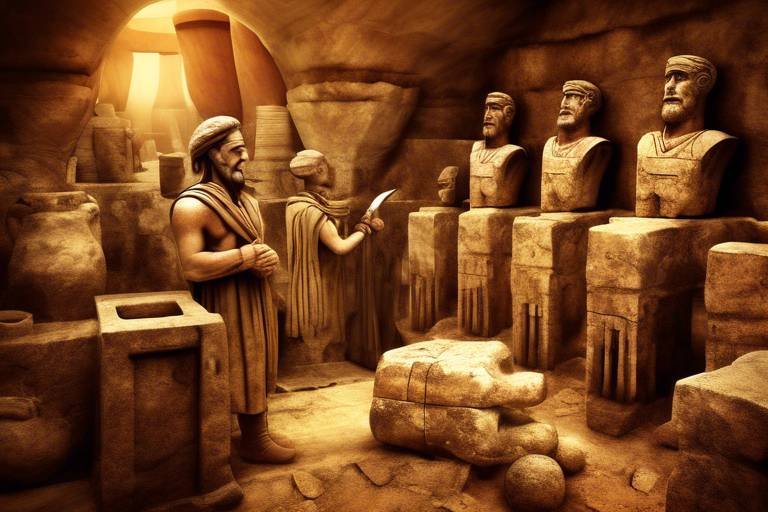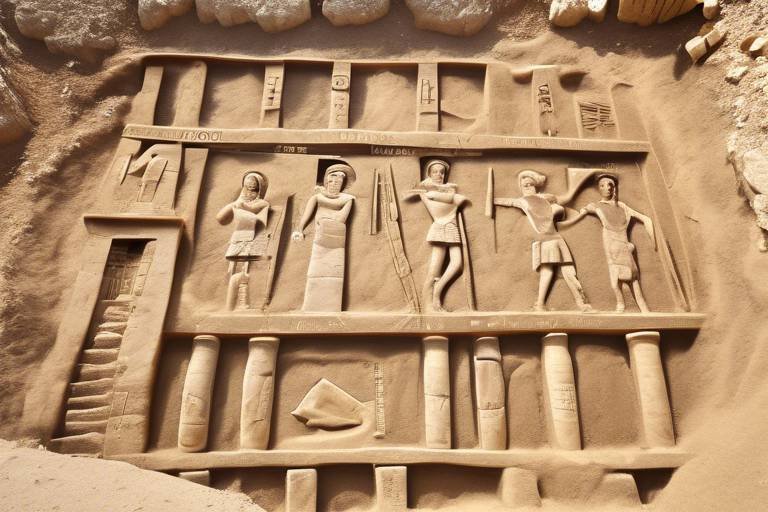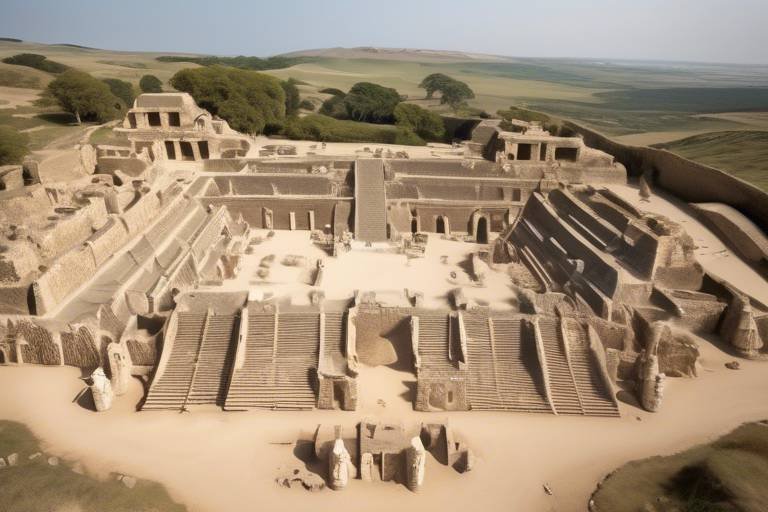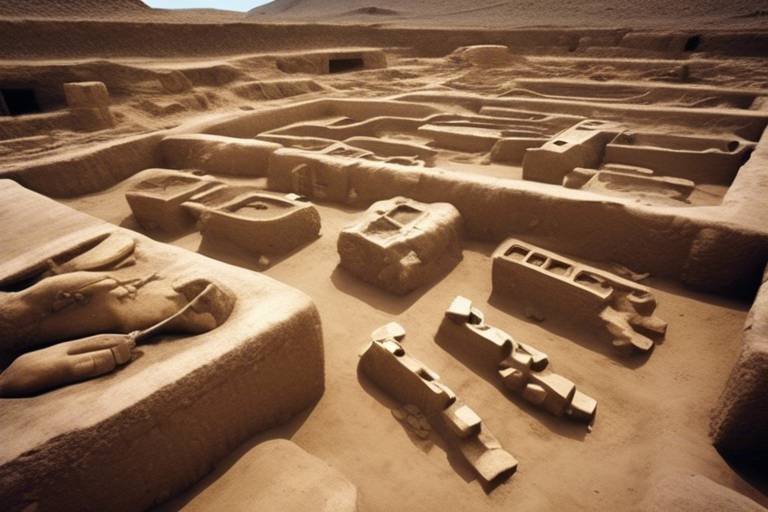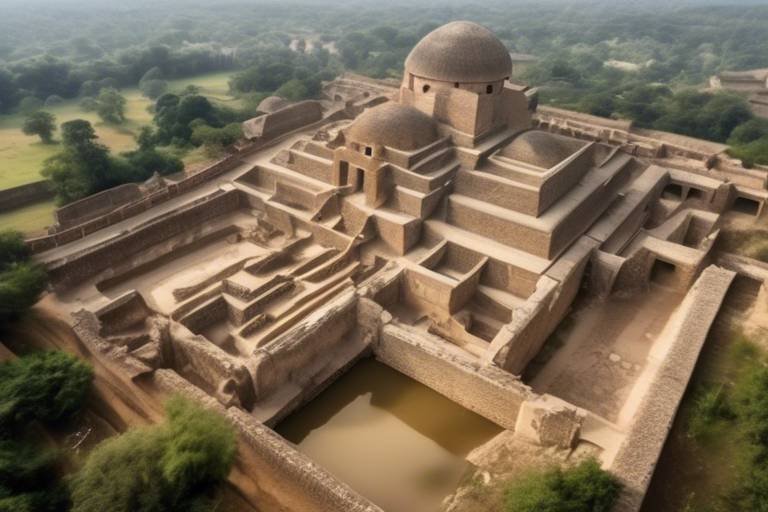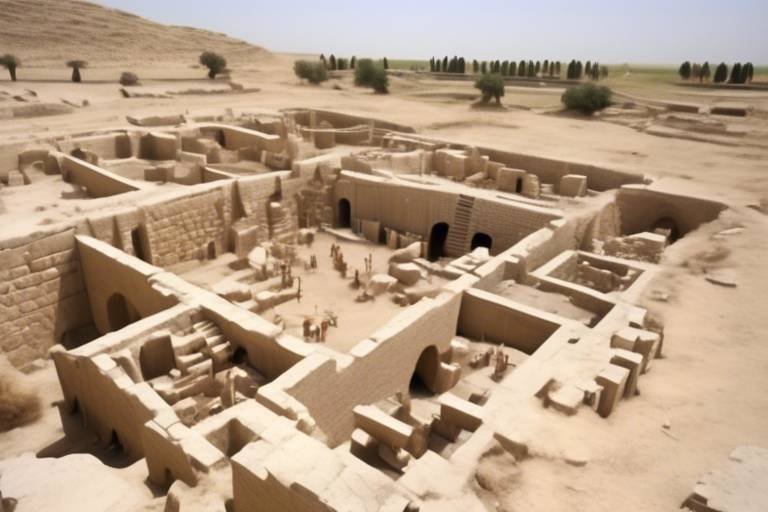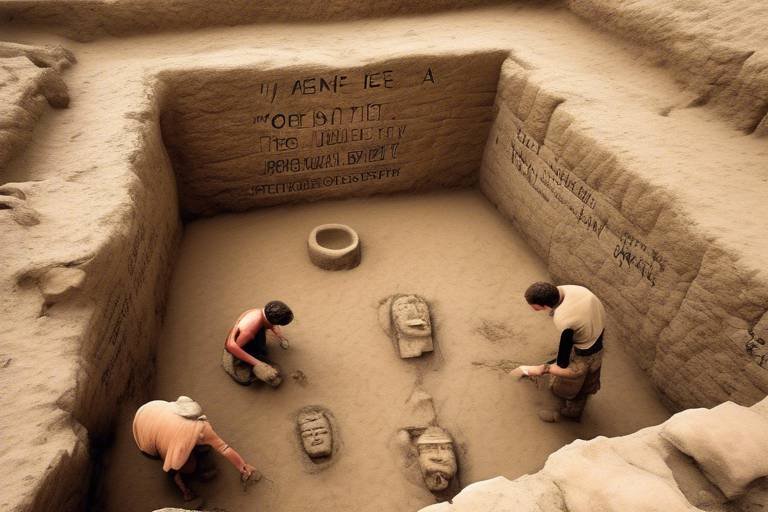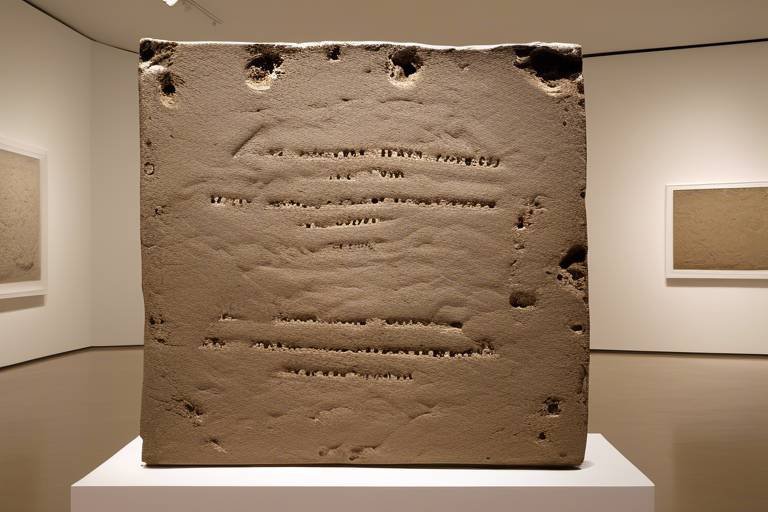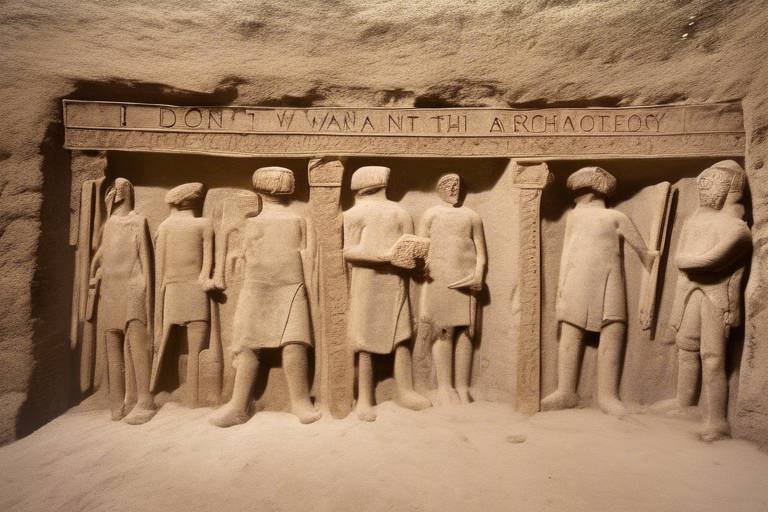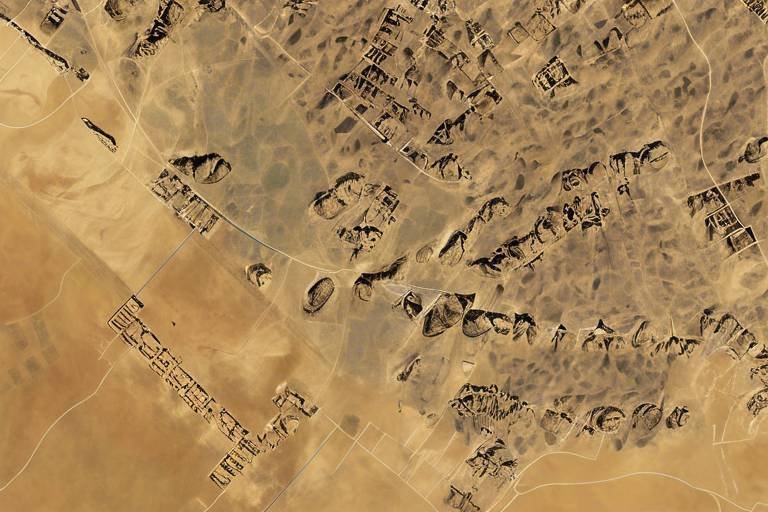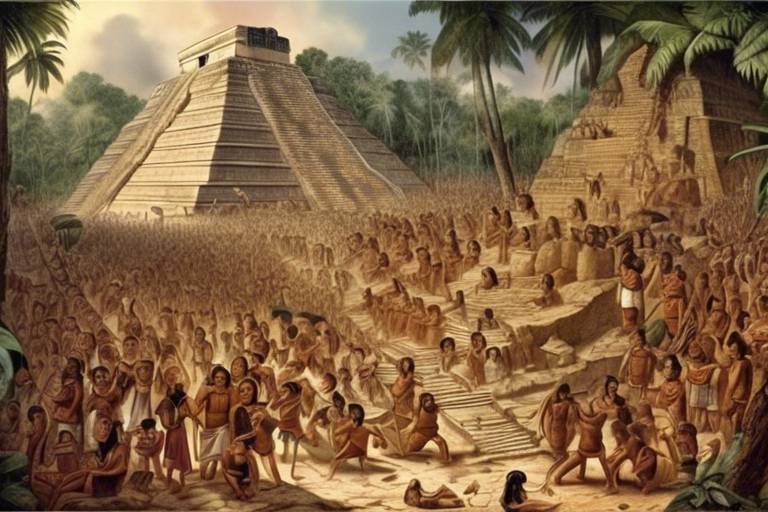The Secrets of Mesoamerican Pyramids
Embark on a journey through time as we delve into the enigmatic world of Mesoamerican pyramids, where ancient civilizations left behind monumental structures shrouded in mystery and wonder. These architectural marvels stand as testaments to the ingenuity and cultural richness of the Mayan and Aztec peoples, offering glimpses into their beliefs, rituals, and advanced knowledge of mathematics, astronomy, and engineering.
As we unravel the secrets of Mesoamerican pyramids, we are confronted with the awe-inspiring grandeur of the Mayan pyramids scattered across the lush landscapes of the Yucatan Peninsula. These towering structures, such as the iconic Pyramid of Kukulkan at Chichen Itza, not only served as ceremonial centers but also showcased the Mayan's profound understanding of celestial movements and their intricate calendar system.
Transitioning to the heart of Mexico City, we encounter the imposing Aztec pyramids that once dominated the urban landscape of the ancient capital of Tenochtitlan. These architectural wonders, including the Pyramid of the Sun at Teotihuacan, were integral to Aztec religious practices, where human sacrifices were offered to appease the gods and ensure the prosperity of their civilization.
Marvel at the ingenuity of Mesoamerican pyramid construction, where ancient engineers utilized advanced techniques to erect monumental structures without the aid of metal tools or pack animals. The precision and scale of these pyramids reflect the sophisticated knowledge and organizational skills of these ancient civilizations, standing as enduring testaments to their cultural legacy.
Delve into the intricate alignments of Mesoamerican pyramids with celestial bodies, a testament to their deep connection with the cosmos and the spiritual significance attributed to astronomical phenomena. These alignments not only served practical purposes in agricultural calendars but also played vital roles in religious rituals and cosmological beliefs.
Uncover the symbolic meanings woven into the very fabric of Mesoamerican pyramid architecture, where intricate carvings and sculptures depict deities, mythological narratives, and the sacred link between the earthly realm and the divine. Each pyramid tells a story of cosmic harmony and spiritual transcendence, inviting us to ponder the profound beliefs of these ancient civilizations.
Despite the passage of time, Mesoamerican pyramids face ongoing challenges in terms of preservation, as natural elements, looting, and modern development encroach upon these sacred sites. Conservation efforts are crucial in safeguarding these architectural treasures for future generations, preserving the rich tapestry of history and culture they embody.
Stay abreast of modern discoveries and research initiatives that continue to shed light on the history and significance of Mesoamerican pyramids, offering new insights into the ancient civilizations that built these enduring monuments. Archaeologists and scholars tirelessly work to unravel the mysteries surrounding these structures, unveiling hidden truths and expanding our understanding of Mesoamerican heritage.
For intrepid travelers seeking immersive experiences, visiting Mesoamerican pyramids offers a glimpse into the past, allowing one to walk in the footsteps of ancient peoples and witness firsthand the architectural splendor and cultural significance of these monumental sites. Explore the mysteries of the past and connect with the vibrant legacies of the Mayan and Aztec civilizations through unforgettable journeys to these iconic pyramids.

Mayan Pyramids
The Mayan pyramids stand as magnificent testaments to the ancient civilization's architectural prowess and astronomical knowledge. Scattered across the lush landscapes of the Yucatan Peninsula, these structures captivate visitors with their grandeur and intricate design. The Mayans, with their advanced mathematical understanding, incorporated precise measurements and alignments with celestial bodies into the construction of these pyramids, showcasing a deep connection to the cosmos.
Each Mayan pyramid served a specific purpose, often functioning as ceremonial centers where religious rituals and astronomical observations took place. These monumental structures were not merely architectural marvels but also symbolic representations of the Mayan worldview, reflecting their beliefs in the interconnectedness of the physical and spiritual realms. The steep steps leading to the pyramid summits symbolized the ascent to the heavens, where the gods resided.
One of the most famous Mayan pyramids is the iconic Pyramid of Kukulkan at Chichen Itza, renowned for its architectural precision and astronomical significance. During the spring and autumn equinoxes, the play of light and shadow creates the illusion of a serpent descending the pyramid's steps, a breathtaking spectacle that highlights the Mayans' intricate understanding of celestial movements.
Exploring these ancient structures offers a glimpse into the rich cultural heritage of the Mayan civilization, inviting visitors to ponder the mysteries of the past and marvel at the ingenuity of those who built these enduring monuments. The Mayan pyramids continue to fascinate and inspire, drawing travelers from around the world to witness the wonders of this ancient civilization.

Aztec Pyramids
The Aztec pyramids, located in the heart of Mexico City, stand as majestic testaments to the advanced architectural and cultural achievements of the Aztec civilization. These towering structures, such as the famous Templo Mayor, served a multifaceted role in Aztec society, encompassing religious ceremonies, astronomical observations, and urban planning.
Constructed with meticulous precision and adorned with intricate carvings and sculptures, Aztec pyramids were not merely symbols of power and authority but also sacred sites where elaborate rituals, including human sacrifices, were conducted to appease the gods and ensure the well-being of the community.
One of the most striking features of Aztec pyramids is their dual-purpose design, serving as both religious centers and administrative hubs. The layout of these pyramids often incorporated multiple platforms and staircases, symbolizing the connection between the earthly realm and the celestial spheres.
Moreover, the strategic positioning of Aztec pyramids within the urban landscape reflected the cosmological beliefs of the Aztec people, with each pyramid aligned to significant celestial events such as equinoxes and solstices, emphasizing the harmony between the natural world and the divine order.
Despite the ravages of time and colonial conquest, the remnants of Aztec pyramids continue to captivate modern-day archaeologists and visitors alike, offering a glimpse into the rich tapestry of Aztec culture, religious practices, and architectural ingenuity.

Mesoamerican Pyramid Construction
Exploring the ancient architectural wonders of Mesoamerican pyramids and uncovering the mysteries surrounding their construction, purpose, and cultural significance.
Discovering the impressive Mayan pyramids scattered across the Yucatan Peninsula and delving into the advanced mathematical and astronomical knowledge incorporated into their design.
Exploring the grandeur of Aztec pyramids in the heart of Mexico City and understanding their role in religious ceremonies, human sacrifices, and urban planning.
When it comes to Mesoamerican pyramid construction, one cannot help but marvel at the sophisticated engineering techniques employed by ancient civilizations. These monumental structures were built without the luxury of metal tools or pack animals, showcasing the ingenuity and craftsmanship of the Mesoamerican people. The precision in the alignment of stones, the use of ramps and pulleys, and the sheer scale of these pyramids continue to astound archaeologists and historians alike. It's as if these ancient builders possessed a secret knowledge that allowed them to create architectural marvels that have stood the test of time.
Investigating the precise alignments of Mesoamerican pyramids with celestial bodies, such as the sun, moon, and stars, and their significance in religious rituals and agricultural calendars.
Unraveling the symbolic meanings embedded in Mesoamerican pyramid architecture, including representations of deities, cosmological beliefs, and the sacred connection between heaven and earth.
Discussing the conservation efforts and challenges faced in preserving Mesoamerican pyramids from natural elements, looting, and modern development encroachment.
Highlighting recent archaeological discoveries and ongoing research projects that continue to shed light on the history, purpose, and cultural legacy of Mesoamerican pyramids.
Guiding travelers on immersive experiences to visit and explore the awe-inspiring Mesoamerican pyramids, offering insights into their significance and the civilizations that built them.

Pyramid Alignments
Pyramid Alignments in Mesoamerican civilizations hold a profound significance, reflecting their deep connection to celestial bodies and spiritual beliefs. The precise orientation of these pyramids towards the sun, moon, and stars was not merely coincidental but a deliberate architectural decision rooted in their intricate cosmological understanding. These alignments were meticulously calculated to coincide with key astronomical events, serving as a testament to the advanced knowledge and reverence for the celestial realm.

Pyramid Symbolism
When it comes to Mesoamerican pyramids, their significance goes far beyond mere architectural structures. These towering edifices hold a wealth of symbolic meanings that offer a glimpse into the complex belief systems and cosmological views of ancient civilizations. From the Mayan to the Aztec pyramids, each structure was imbued with layers of symbolism that reflected spiritual beliefs, societal values, and the connection between the earthly realm and the divine.
One of the key aspects of pyramid symbolism in Mesoamerican cultures is the representation of deities and gods. These pyramids were often dedicated to specific gods, with their architectural features and orientations aligning with the characteristics and domains of these divine beings. For example, the Temple of the Feathered Serpent at Teotihuacan symbolizes the worship of Quetzalcoatl, the feathered serpent deity associated with creation and fertility.
Furthermore, Mesoamerican pyramids served as cosmological symbols, embodying the sacred geography of the universe. The alignment of pyramids with cardinal directions, celestial events, and natural elements reflected a deep understanding of the interconnectedness between the physical world and the spiritual realm. These structures were not just monuments but cosmic maps that guided rituals, ceremonies, and agricultural practices.
Another layer of pyramid symbolism lies in the concept of axis mundi, the central axis that connects heaven and earth. Mesoamerican pyramids were believed to function as sacred centers where communication with the divine could occur. The towering heights of the pyramids symbolized the ascent from the earthly plane to the celestial realms, bridging the gap between mortals and gods.
Moreover, the intricate carvings, reliefs, and hieroglyphs adorning Mesoamerican pyramids conveyed narratives of creation myths, heroic deeds, and historical events. These artistic elements served not only as decorative features but also as repositories of cultural knowledge and spiritual teachings, ensuring the preservation of collective memory for future generations.

Pyramid Preservation Challenges
Preserving Mesoamerican pyramids poses a significant challenge due to various factors that threaten their integrity and historical significance. One of the primary challenges is the impact of natural elements such as erosion, weathering, and seismic activity. Over centuries, these pyramids have been exposed to harsh environmental conditions that gradually deteriorate the structural stability of the ancient stones.
Furthermore, the threat of looting and vandalism looms over these archaeological sites. Illegal excavations not only result in the loss of valuable artifacts but also disrupt the original layout and context of the pyramids. Protecting these sites from unauthorized access and ensuring their security are crucial aspects of preservation efforts.
Modern development encroachment is another pressing issue faced in preserving Mesoamerican pyramids. Urban expansion, infrastructure projects, and commercial activities often encroach upon the surrounding areas of these historical sites, leading to potential damage and disturbance to the ancient structures.
To combat these preservation challenges, conservationists and archaeologists employ a combination of strategies. These include implementing monitoring systems to track environmental impact, conducting regular maintenance and restoration work, establishing protective boundaries around the sites, and raising awareness about the cultural significance of the pyramids to garner public support for their preservation.

Modern Discoveries and Research
Modern Discoveries and Research in the field of Mesoamerican pyramids have been a source of fascination for archaeologists and historians alike. Recent excavations have unearthed new insights into the construction techniques, purpose, and cultural significance of these ancient structures. One notable discovery is the use of a white plaster made from limestone to coat the pyramids, reflecting the importance of aesthetics and symbolism in Mesoamerican architecture.
Archaeologists have also made significant progress in deciphering the hieroglyphic inscriptions found on the walls of pyramids, providing valuable information about the rulers, ceremonies, and religious practices of the ancient civilizations. Through advanced imaging techniques, researchers have been able to uncover hidden chambers and passageways within the pyramids, revealing secrets that have been buried for centuries.
Furthermore, ongoing research projects are focused on studying the environmental impact of Mesoamerican pyramids on their surrounding landscapes. By analyzing soil samples, plant remains, and water management systems near the pyramids, scientists are gaining a better understanding of how these ancient civilizations interacted with their natural environment and sustained their societies.

Visiting Mesoamerican Pyramids Today
Embarking on a journey to explore the Mesoamerican pyramids today is like stepping back in time to witness the grandeur and ingenuity of ancient civilizations. As you stand before these magnificent structures, you can't help but feel a sense of awe and wonder at the architectural feats achieved by the Mayans and Aztecs.
Guided tours offer visitors a chance to delve into the rich history and cultural significance of the pyramids, providing insights into the religious practices, daily life, and beliefs of the people who built these monumental structures. Walking in the footsteps of ancient priests and rulers, you can imagine the bustling activity that once filled these sacred sites.
Many Mesoamerican pyramids are located in stunning natural settings, surrounded by lush jungles or overlooking vast plains. The breathtaking views from the pyramid summits offer a unique perspective of the landscape, allowing you to appreciate the strategic positioning chosen by the ancient builders.
Visitors can also explore the intricate carvings, sculptures, and hieroglyphs adorning the pyramid walls, each telling a story of myth, history, and spirituality. These artistic expressions provide a glimpse into the complex worldview of Mesoamerican societies and their deep connection to the natural world.
For those seeking a more immersive experience, some sites allow climbing to the pyramid summits, providing a thrilling opportunity to see the world from a different vantage point. Standing atop these ancient structures, you can't help but marvel at the skill and craftsmanship that went into their construction.
Before planning your visit, it's essential to research the best times to go, as some sites may have specific opening hours or seasonal restrictions. Additionally, respecting the rules and regulations set in place for preservation is crucial to ensure that future generations can continue to marvel at these architectural wonders.
Whether you are a history enthusiast, an adventure seeker, or simply curious about the mysteries of the past, visiting Mesoamerican pyramids offers a profound and unforgettable experience that will leave you with a newfound appreciation for the ancient civilizations that once thrived in these lands.
Frequently Asked Questions
- What is the significance of Mesoamerican pyramids?
Mesoamerican pyramids hold immense cultural and religious significance as they were used for various purposes such as religious ceremonies, astronomical observations, and as symbols of power and authority.
- How were Mesoamerican pyramids constructed?
Ancient Mesoamerican civilizations employed sophisticated engineering techniques and manual labor to construct massive pyramids using stone blocks, ramps, and manpower without the aid of metal tools or pack animals.
- What is the importance of pyramid alignments?
The precise alignments of Mesoamerican pyramids with celestial bodies like the sun, moon, and stars played a crucial role in religious rituals, agricultural calendars, and symbolized the connection between the earthly realm and the divine.
- Are Mesoamerican pyramids open to visitors?
Yes, many Mesoamerican pyramids are open to visitors, offering a unique opportunity to explore the ancient architectural wonders, learn about the history and culture of the civilizations that built them, and witness the grandeur of these structures firsthand.




